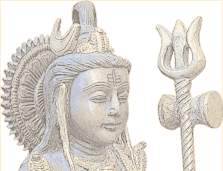What is the difference between tantra yoga and other types of yoga?
-
In classical yoga literature, the individual paths sadhakas (the practitioners of yoga) may choose to follow are often categorized into four groups, each corresponding to one of the four elements (earth, water, fire, air). These are:
- Karma yoga, usually preferred by people who have the fire element dominant in their astrological chart and tend to be very active.
- Raja yoga, usually preferred by people who have the earth element dominant in their astrological chart and tend toward an empirical approach of observation and experimentation.
- Jnana yoga, usually preferred by people who have the air element dominant in their astrological chart and thus tend to be contemplative and like to gather knowledge.
- Bhakti yoga, usually preferred by people who have the water element dominant in their astrological chart and tend to be more emotional with strong devotional tendencies.
Less often mentioned in the classical literature is Tantra yoga, which is a practice intended to balance the four elements, earth water, fire, air, through the fifth element, akasha. The akasha principle is the element from which the other four arise. Tantra is a complete and balanced yoga, and just as akasha includes the other four elements, Tantra contains within it the essence of the first four yoga disciplines.
Being holistic, Tantra accepts human nature and rises by it, rather than avoiding and denying human nature as, for instance, the ashtanga yoga of Patanjali does. As an example, Patanjali’s ashtanga yoga promotes the practice of brahmacharya (celibacy) as a necessity for attaining enlightenment. Patanjali states “As the result of purity, there arises indifference toward the body and disgust for physical intercourse with others.” This is definitely not the way of Tantra.
Tantra is life-affirming and does not consider sex impure or physical intercourse disgusting. The body is a temple and a vehicle for enlightenment. Tantra’s root philosophy is that kama (fulfillment of desire), artha (prosperity), dharma (spiritual and moral duty), and moksha (liberation), are all one.
Tandava Tango
Tantra is like dancing tango. It is movement, fluid energy moving through time and space between Shiva and Shakti, male and female. One symbol of this movement is Shiva Nataraj (Shiva as King of Dancers). Tandava is the dance of Shiva, and represents the play of energy (lila) between Shiva and Shakti, sun and moon, yang and yin. It is the rhythmic movement of lovers in hot embrace which leads to cosmic consciousness.
The whole of the universe participates in the dance of Shiva, whether it is aware of it or not. Some of us take delight in it and wish to learn the secrets of tandava, thus, we practice Tantra.
To take the first step on the path of Tantric sadhana, here is more about the necessary Tantric attitude.




